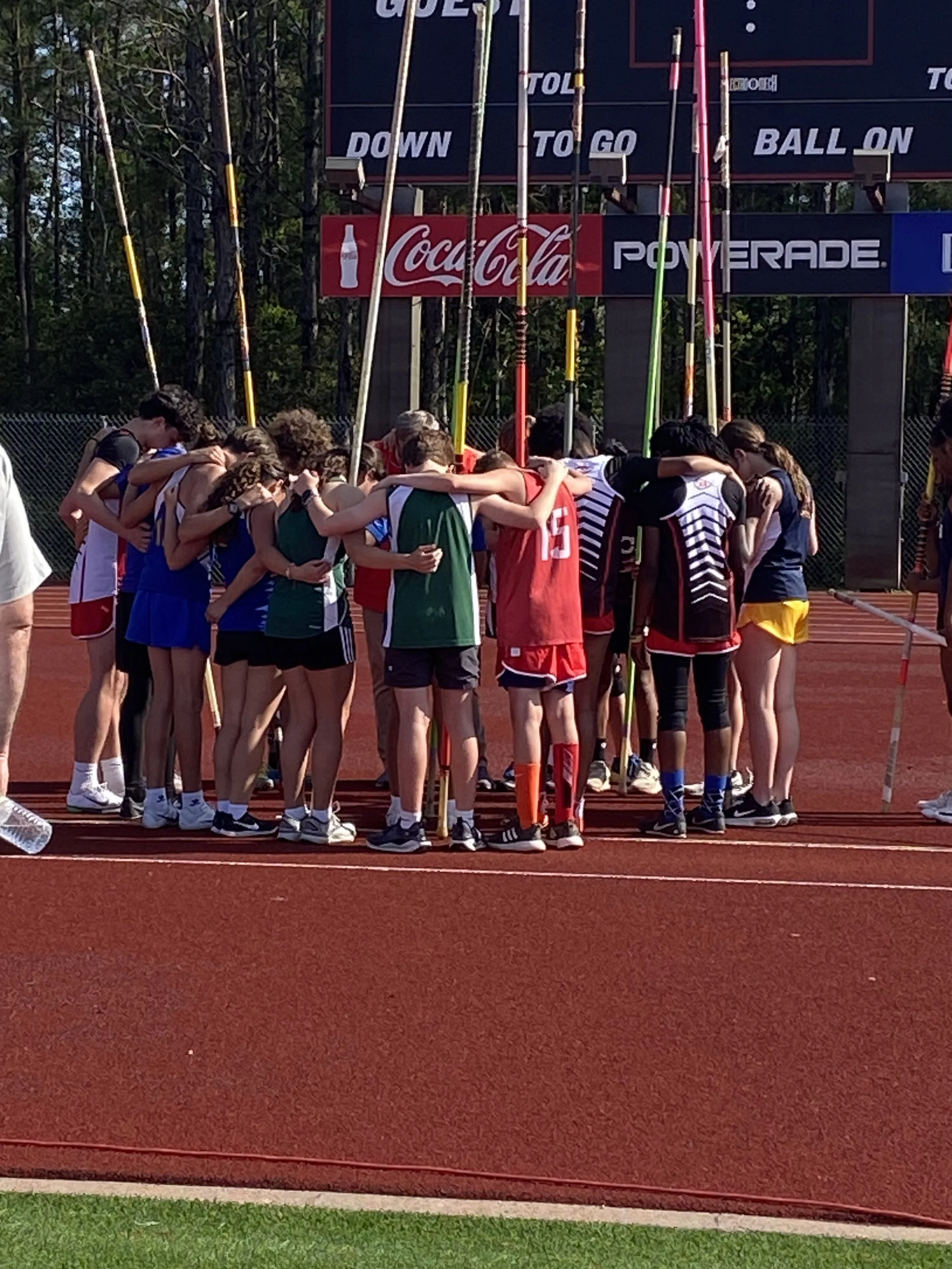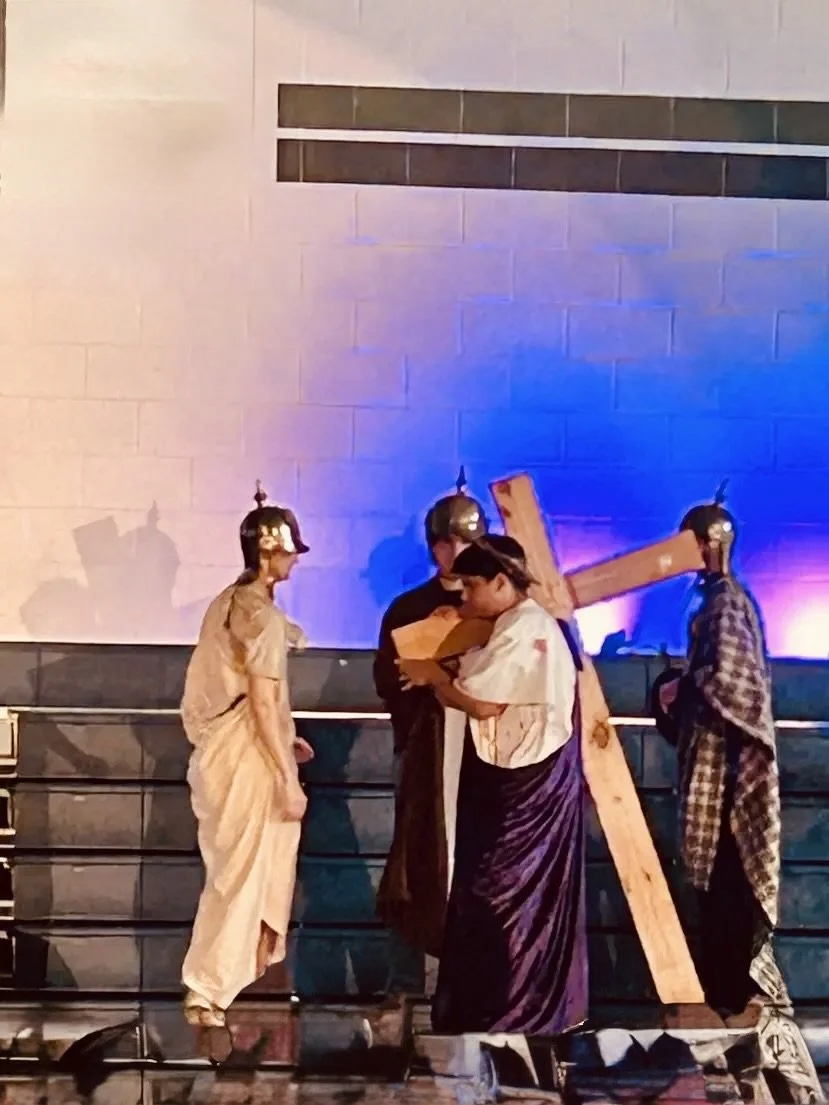Campus Culture 101
Through baptism, we are all sharers in the priestly, prophetic, and royal office and therefore, share in the Church’s mission to form disciples of Jesus (CCC 871). This is not only the call of priests or the “super holy” - it’s the baptismal mission of every Christian. For those of us in Catholic high schools, this mission takes a very real shape: walking with students in their daily lives and guiding them toward Christ.
I’ve heard it said that those in campus and youth ministry, including teachers, are “in the trenches.” This is reality as we experience the messiness and moments of grace in students’ lives. It is a privilege to stand in this place of “trenches” when it allows one to guide young people towards Christ as they navigate the challenges of their youth.
This is what sets a Catholic school apart. Without a lived faith, a Catholic high school is just another private institution. What makes it truly different is a community rooted in Christ, nourished by the sacraments, and alive with a Catholic identity that shapes its entire culture. Catholic identity is the root; Catholic culture is the fruit.
Track teams praying together before a competition.
What is Catholic Culture?
When people hear “Catholic culture,” they likely think of the visible signs of faith - crucifixes, statues, and more. Those signs are important, but Catholic culture is much deeper and lived out. It’s the atmosphere, the shared values, and the daily habits that center the entire community on Christ. Catholic culture is visible in the relationships of the students and families. It’s evident in the teachers who encourage virtuous practices in the classroom and sports teams who perform with integrity. There’s an infectious joy in the hallways. Faith is not an extra class that students are required to take, but the lens through which the entire community views life.
Students in high school are in an impressionable, formative season of life. The practices and skills that they learn during this time will determine the types of adults they will become. The culture they experience in high school will become the environment that they crave and create in the future. In short, Catholic culture in a high school matters because it forms the whole child—mind, body, and soul. Young men and women who know, love, and follow Jesus in every sphere of life are more likely to remain faithful throughout their lives.
I’ve seen it firsthand. My college-aged son led music for a Catholic Mass hosted at a fraternity house. He shared that the “Frat Mass” was organized by an alum from our Catholic high school and many of the attendees were former classmates. That Mass was fruit from seeds planted years earlier on our campus. Catholic culture, when lived well, continues to bear fruit long after students leave our halls.
A Marian statue or a rosary garden creates a meaningful prayer space for students.
Creating a Culture of Encounter
One of my favorite parts of the role I play as the Campus Minister in a Catholic high school is providing opportunities for students to meet Jesus. The environment of a Catholic High School should invite students, faculty, and the entire school community into encounter with our Lord. Everything should flow from Him.
The sacramental life is the heartbeat of the school. Regular Mass, Eucharistic Adoration, and Reconciliation aren’t extras - they are what give Catholic culture its rhythm and life. The Eucharist, after all, is the “source and summit of the Christian life” (CCC 1324). The celebration of the Mass is the most important thing we do in a Catholic school.
Catholic Tradition gives this culture its depth and richness. Rituals, feast days, and devotions—especially during Advent, Lent, and Easter—create a unique sense of belonging and remind students they are part of something much bigger than themselves. This means making Advent, Lent, and Easter visible and meaningful - not only in Theology classes, but in the halls, the chapel, the calendar, and the rhythm of daily life. Senior leaders on the Campus Ministry team can plan powerful prayer services with skits about Advent and Lent to invite students and staff into a deeper understanding of Christ’s love for them.
A Passion play performed by the Campus Ministry Team during Lent.
Practical Ways to Build Catholic Culture on Campus
So what does this look like on campus?
Holy Half Hour of Adoration before school
Check out this Spotify playlist for Eucharistic Adoration to help students focus during worship.
Monthly confession and seasonal Reconciliation services
Weekly Mass celebrated with the whole school
Student-led Small groups and Bible studies
Classroom prayer that’s intentional and student-led
From Culture to Mission
The purpose of high school is to form lifelong learners who are leaders in their communities. The mission of Catholic education goes even further: to graduate students with missionary hearts. Our goal is to send young men and women into the world ready to build God’s kingdom in their families, workplaces, and parishes.
That’s why teachers and staff play such an important role—not only by teaching content but by modeling faith leadership. When we give students opportunities to lead prayer, organize service projects, or serve as peer ministers, we are training them to carry their faith beyond campus. The habits they form here become the mission they live for the rest of their lives.
A colleague once said, “We are not trying to get our students to Harvard, we are trying to get them to heaven.” In the end, Catholic culture is about forming saints. When Catholic culture is lived fully, students don’t only graduate with diplomas—they graduate as disciples, ready to transform the world in Christ.









